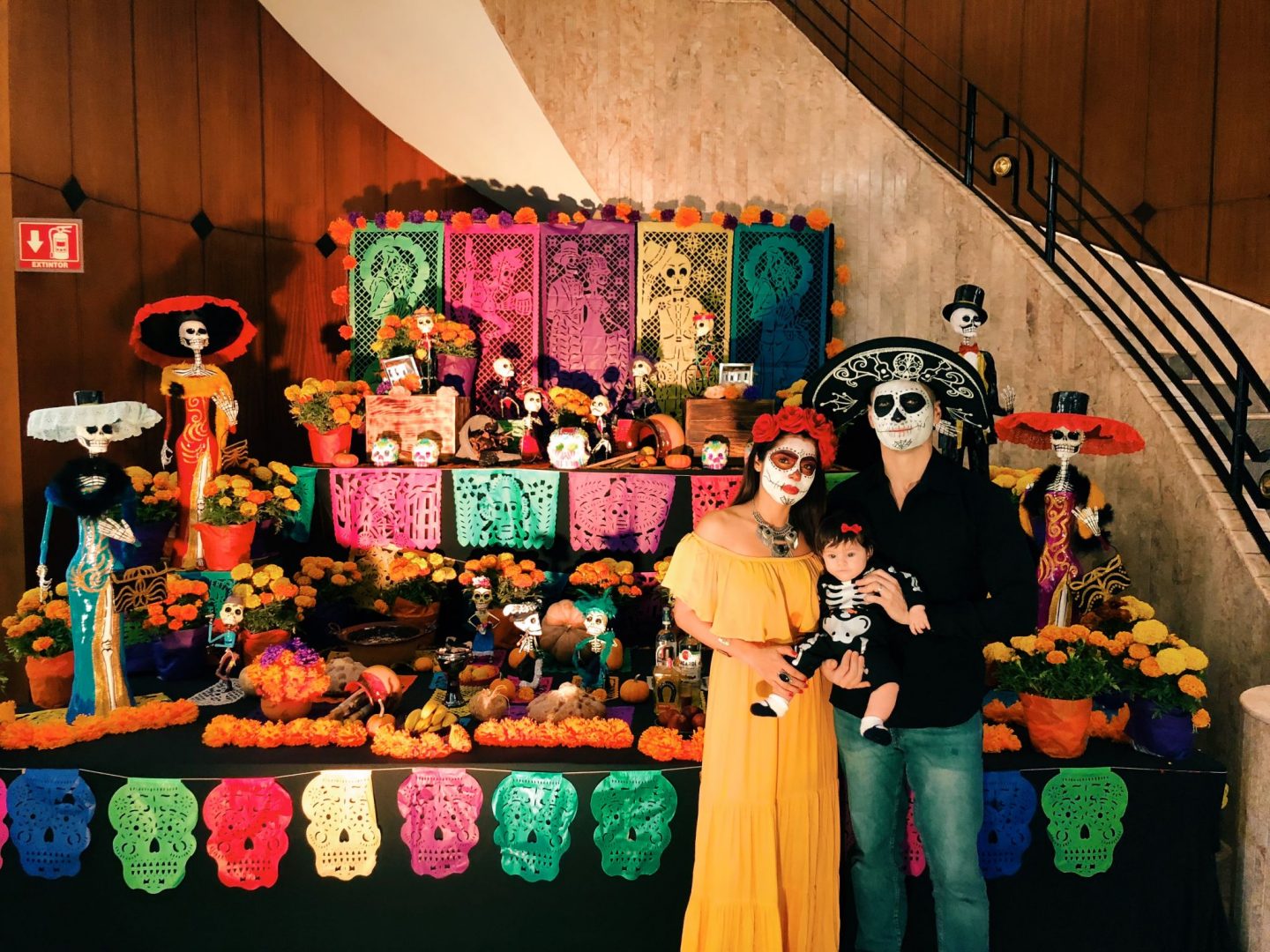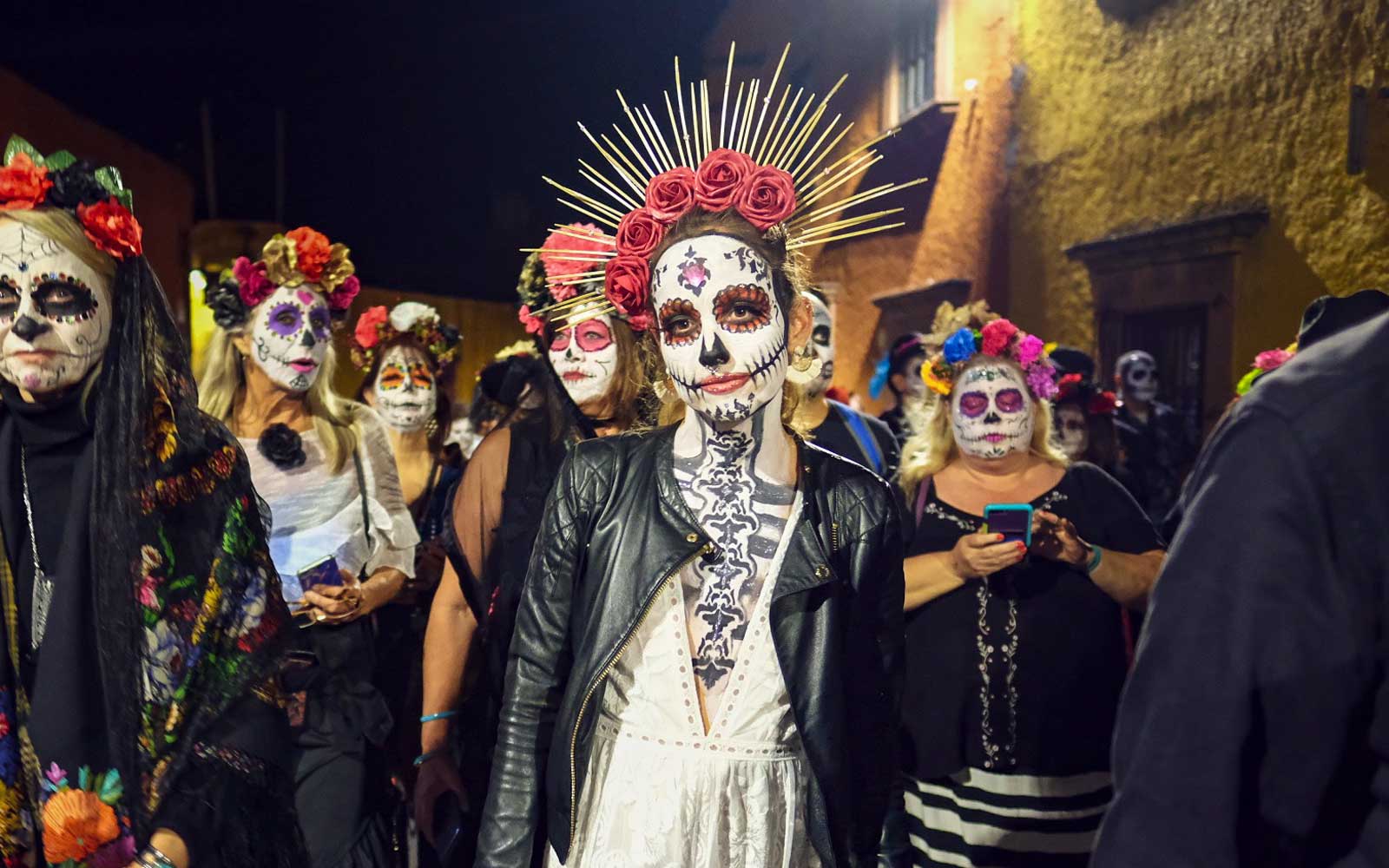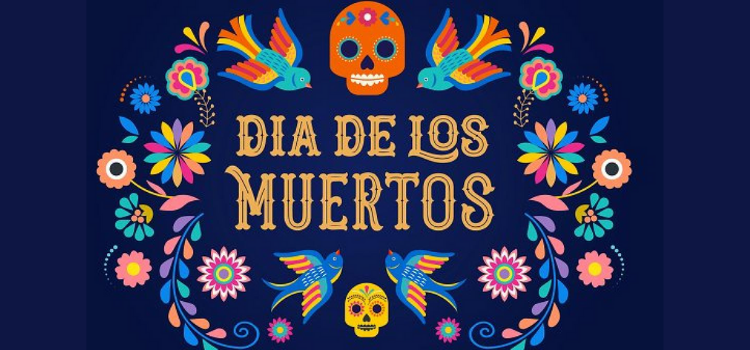
If you’ve seen the fancy, though somewhat macabre, sugar skull paint designs adorning the faces of trick-or-treaters or partygoers around Halloween, you may have wondered about their history and origin. This skull design is used in the Mexican Day of the Dead (El Dia de los Muertos) celebration. Day of the Dead is widely celebrated annually in Central and Southern regions of Mexico from Oct. 31 – Nov 2. The holiday focuses on remembering and honoring family members and friends who have passed away. The painted skulls represent a departed soul; often the name of the person who has passed is written on the forehead and the skull is then placed at the home as an offering or left at a gravesite to honor the return of a particular spirit. Sugar skull art reflects a folk art style with bright colors and decoration made of edible sugar icing or sparkly tin and glitter.
What is Day of the Dead?
Day of the Dead festivities began with ancient indigenous peoples of Mexico who believed that the souls of the dead return each year to visit with their living relatives to eat, drink and be merry – just like they did when they were living. In the 1960s, the Mexican government made it a national holiday.
 Throughout the 3 days and nights, there are several traditions that take place (so it’s really more like Three Days of the Dead). First, the graves and altars are prepared by the entire family, bringing the departed’s favorite foods and drinks as well as the sugar skulls or other offerings like poems and drawings. At the cemeteries, candles are lit, ancient incense is burned, prayers and chants for the dead are intoned and then drinks and food are consumed in a party-like atmosphere. Then promptly at 6:00 pm, bells begin to ring (every 30 seconds), in the hopes of summoning the dead loved ones of those keeping vigil. They continue to ring throughout the night. At sunrise, the bell ringers stop and everyone goes home, only to begin again the following day.
Throughout the 3 days and nights, there are several traditions that take place (so it’s really more like Three Days of the Dead). First, the graves and altars are prepared by the entire family, bringing the departed’s favorite foods and drinks as well as the sugar skulls or other offerings like poems and drawings. At the cemeteries, candles are lit, ancient incense is burned, prayers and chants for the dead are intoned and then drinks and food are consumed in a party-like atmosphere. Then promptly at 6:00 pm, bells begin to ring (every 30 seconds), in the hopes of summoning the dead loved ones of those keeping vigil. They continue to ring throughout the night. At sunrise, the bell ringers stop and everyone goes home, only to begin again the following day.
This may all seem morbid and somewhat ghoulish to those who are not part of the culture. Many non-Mexicans have had very little exposure to this holiday, other than seeing it celebrated joyfully in the Disney movie, Coco. But, for Mexicans who believe in the life/death/rebirth continuum, Day of the Dead is a revered and festive annual celebration.
 Day of the Dead fun facts:
Day of the Dead fun facts:
- In some parts of Mexico, children celebrate Day of the Dead much like American children celebrate Halloween. They go from house to house and ask for small gifts like candies and money. Adults also participate, and many homeowners hand out food and drinks to visitors throughout the night.
- Many Mexican-Americans living in the United States celebrate Day of the Dead, including those living in Los Angeles and Corpus Christi, Texas.




